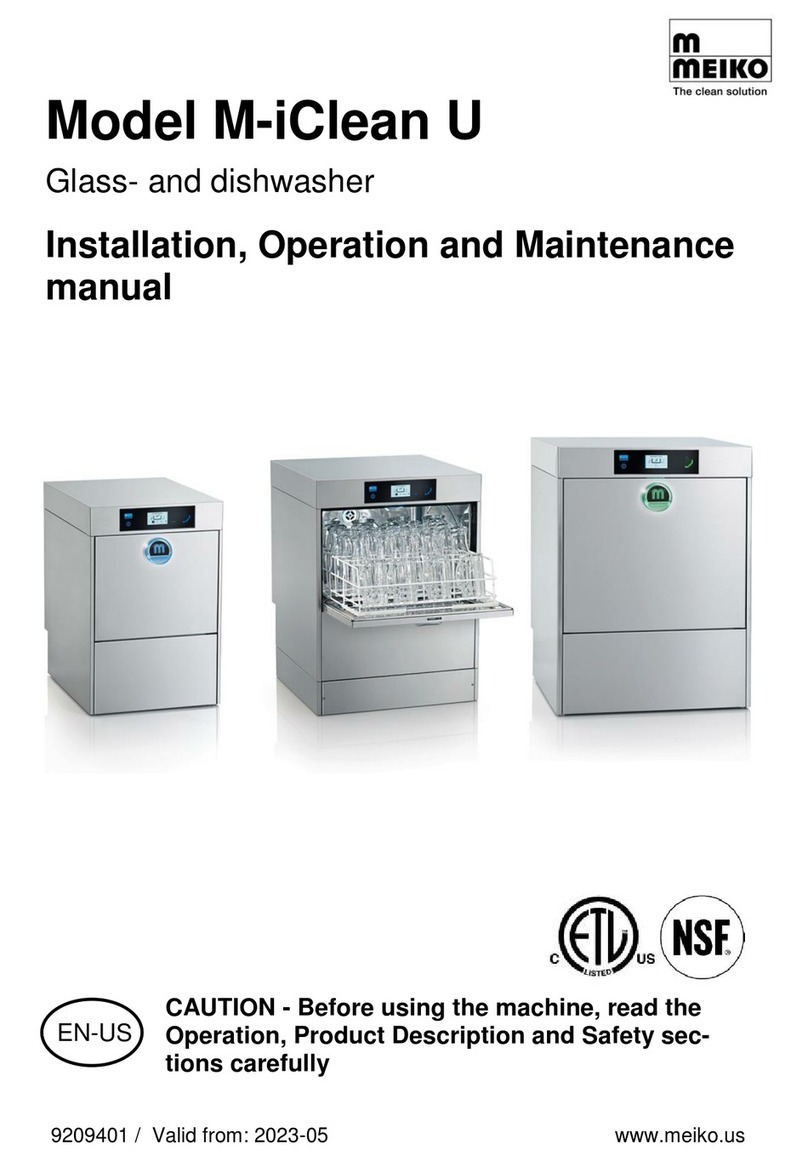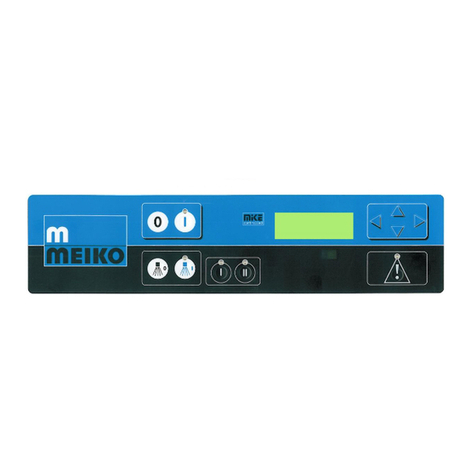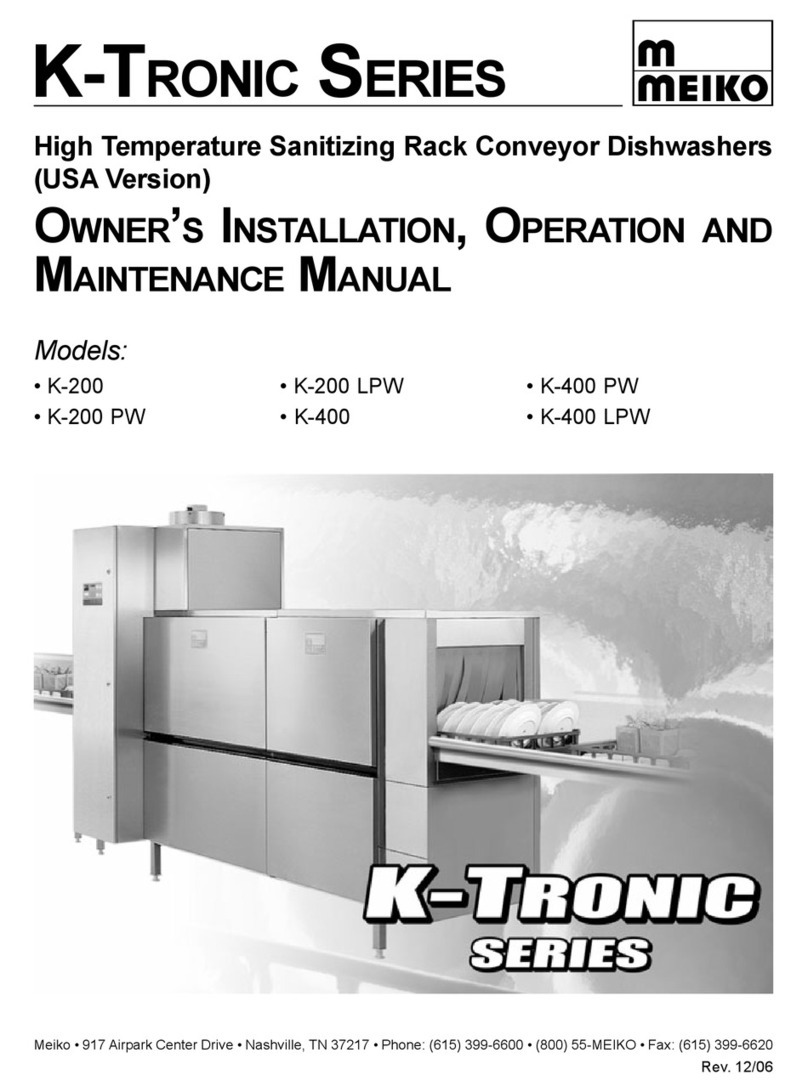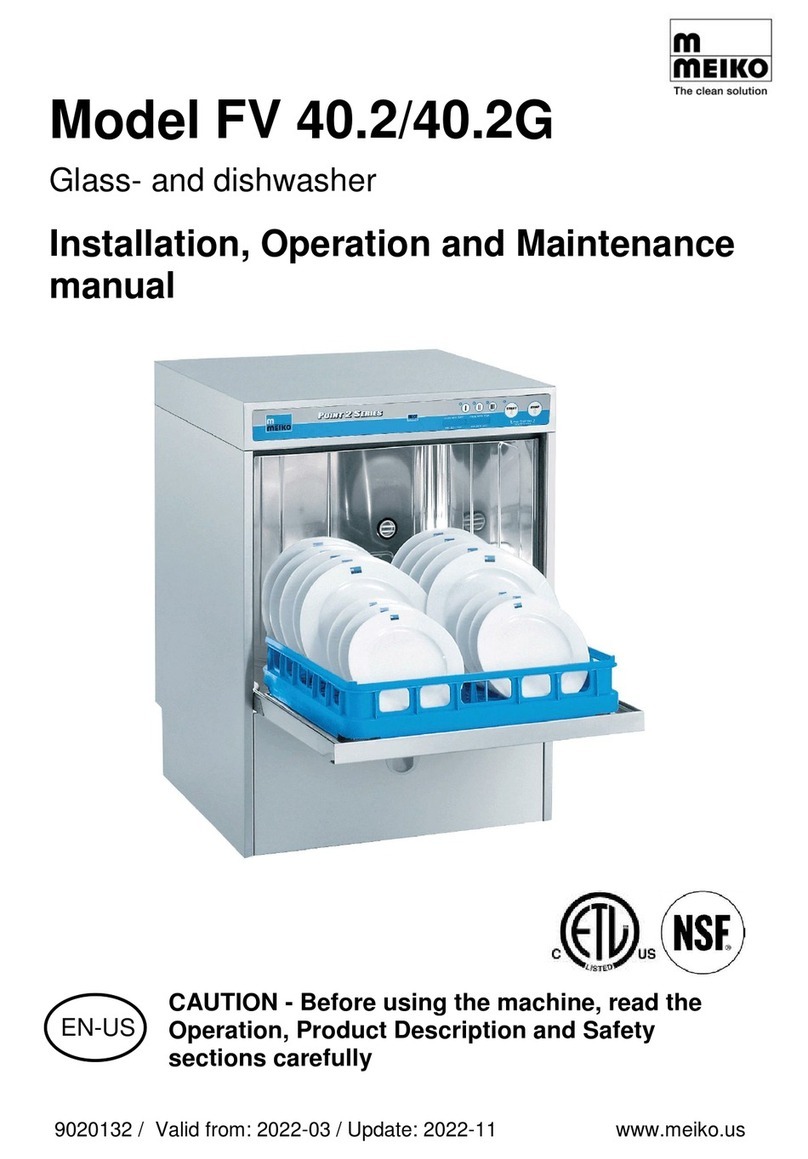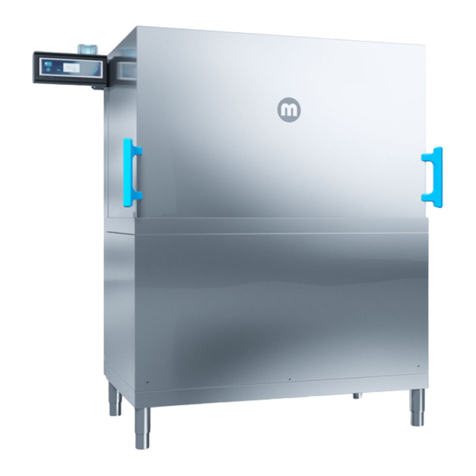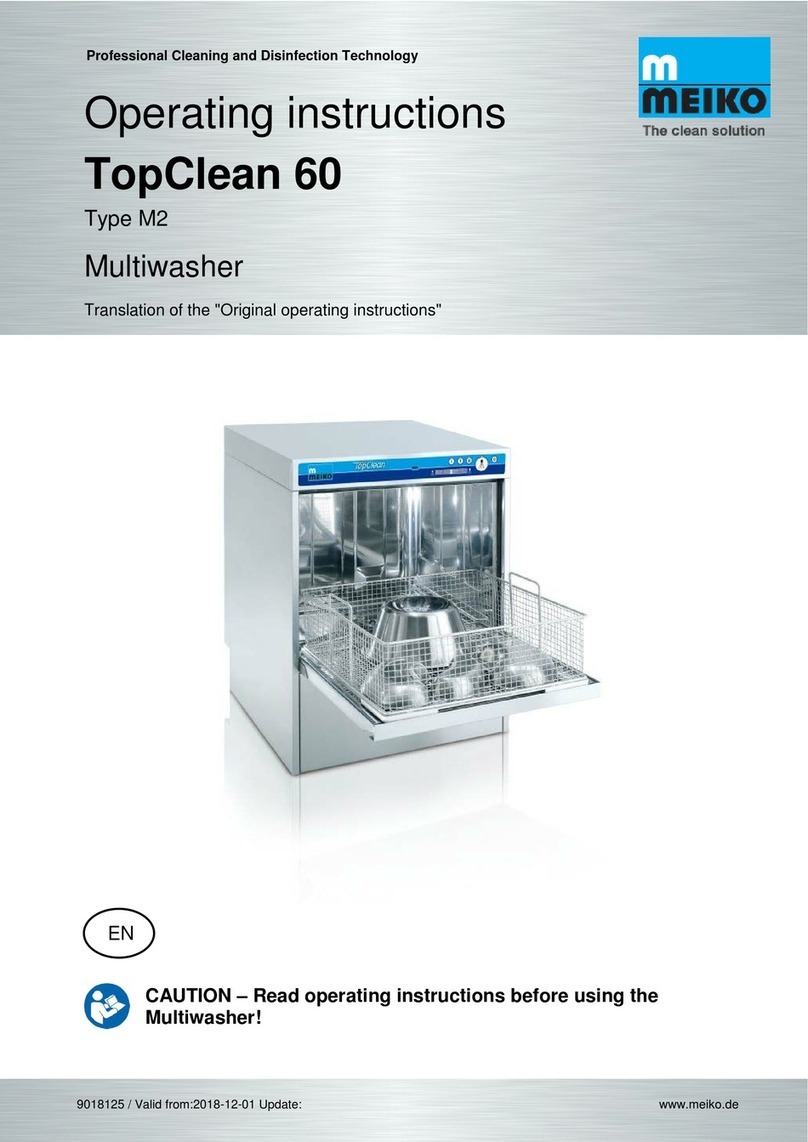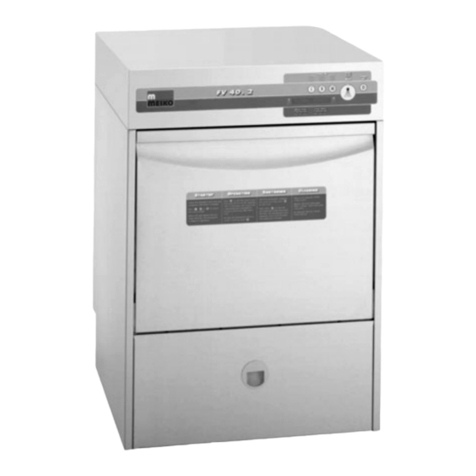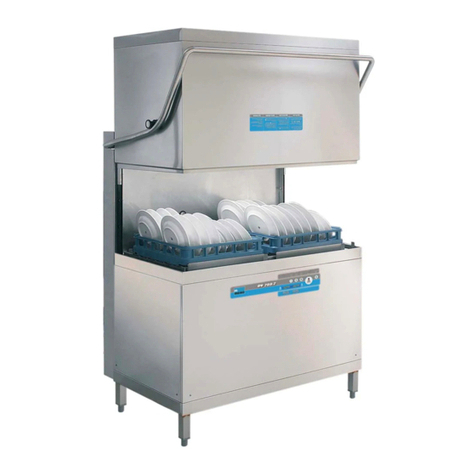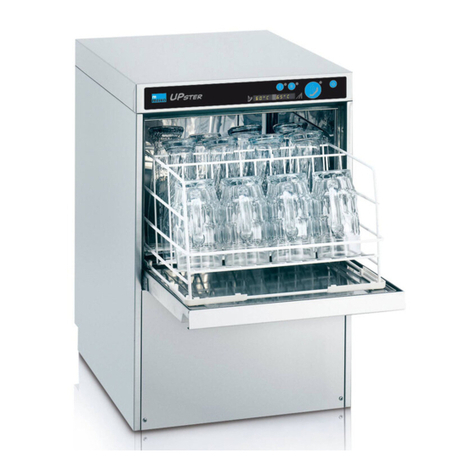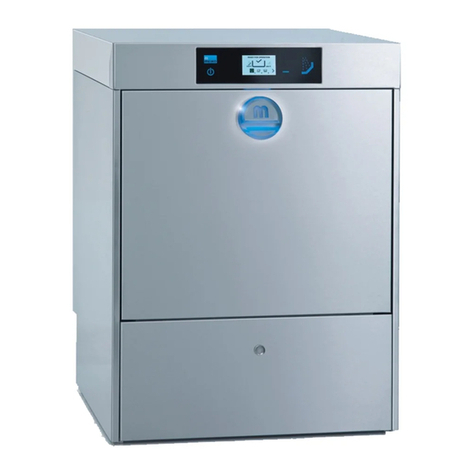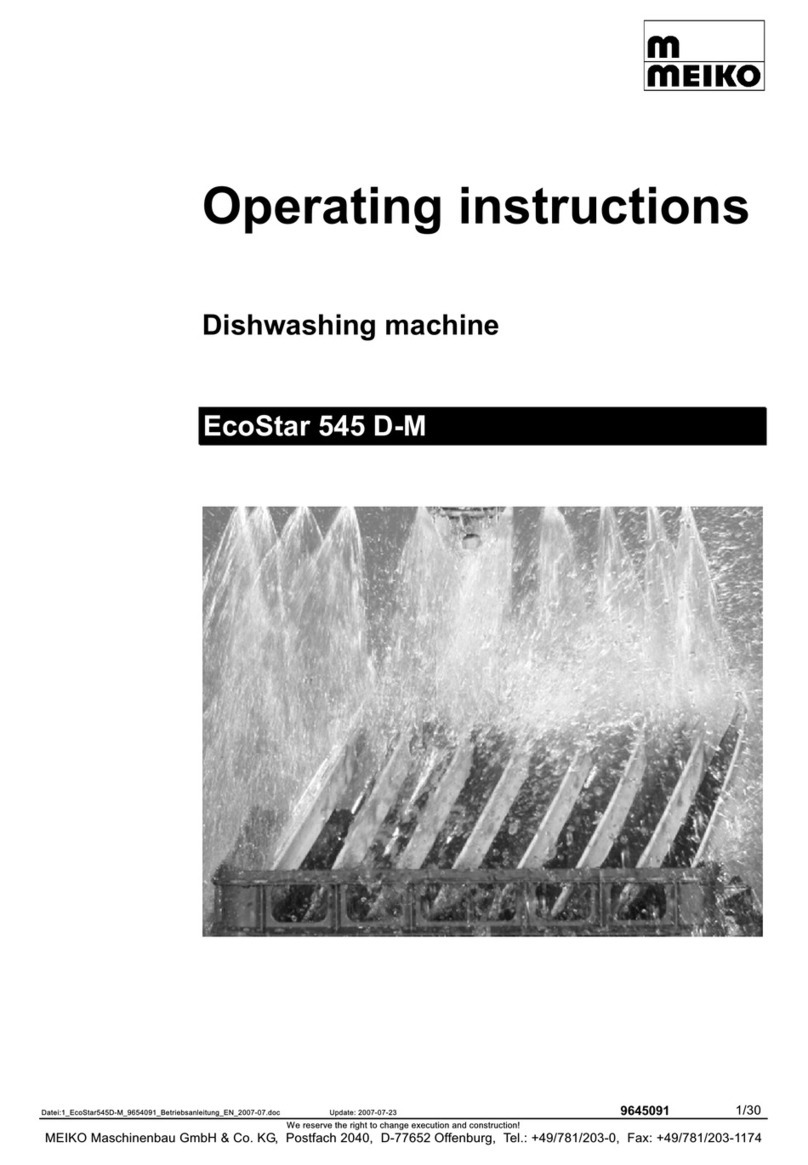Operating instructions General safety information
FV 40.2
- 5 -
Open the door very carefully during the program cycle, as otherwise
wash water could splash out.
3.3.1 Emergency switch
Ø Set the local main switch to ”OFF“ or disconnect the local main fuse.
3.4 Authorized users / operators
It is assumed that two groups of users will come into contact with the
appliance:
1. Service engineers from the manufacturer or the agency or installation
engineers from the authorised dealer: these are qualified technicians
and have good product knowledge.
2. Operators - with basic knowledge (our customers must instruct the
operators).
Customers’ responsibility relating to the groups of users
q The persons responsible for safety must fully guarantee that only
qualified persons carry out connection, adjustment or maintenance
works on the open appliance.
q Permission for carrying out this type of work is given by the person
responsible for the safety of staff and of the appliance to persons
qualified because of their training, education, experience or
instructions; or because of their knowledge regarding standards,
regulations, accident-prevention regulations and the circumstances
of the installation.
q The persons responsible for safety must instruct the operators with
regard to the operation and the safety aspects of the appliance.
q Steps must be taken to ensure that the operating instructions
supplied are available for both user groups. Service personnel must
also have the documentation relating to the order available for them
when undertaking any work and observe these instructions in order
to avoid any hazard and/or damages.
3.5 Chemicals for the operation of the appliance
Only detergents and rinse-aids suitable for the use in industrial
dishwashers may be used. Relevant information is provided by the
manufacturers of these products.
If unsuitable products are used, the life expectancy of the dosing units
can be reduced considerably.
Observe the dosing instructions of the manufacturer.
Detergents and rinse-aids can present a health hazard if they are not
correctly used. Observe the manufacturers’ instructions on the original
packing and on the safety data sheets.
If a de-scaling agent is used, observe the manufacturer’s instructions
strictly regarding handling and safety. After such an agent has been
used the product must be completely removed from the machine, as
even small residues are sufficient to destroy plastic parts and sealing
materials.
3.6 Environmentally acceptable measures, measures for disposal
Each discarded appliance is to be made immediately unserviceable in
order to avoid accidents at a later date.

